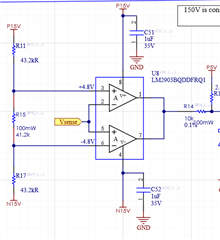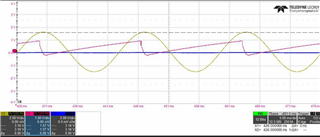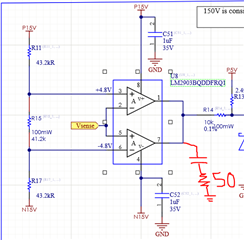Other Parts Discussed in Thread: LM211-Q1
Hi TI,
I am trying to design a comparator circuit with LM2903BQDDFRQ1 for over voltage and over current detection. The output voltage of a HAL sensor (which is AC) is fed to the comparator and if it goes out of range, it should notify the controller to take action.
The HAL sensor measures the output of an inverter which is supposed to be used as a power wall ( 110V nominal ).
If the sensed voltage is in range ( -4.8 < Vsense < +4.8 ), the output is pulled up to 5V, otherwise it starts toggling ( since it is an AC signal ) between 5V and 1V ( from resistor voltage divider ). But the controller requires a solid logic level for over voltage detection, either logic level low or high. How can I achieve that solid logic level and avoid the toggling ?



 Almost what I get at the output which I need to avoid the toggling
Almost what I get at the output which I need to avoid the toggling 

